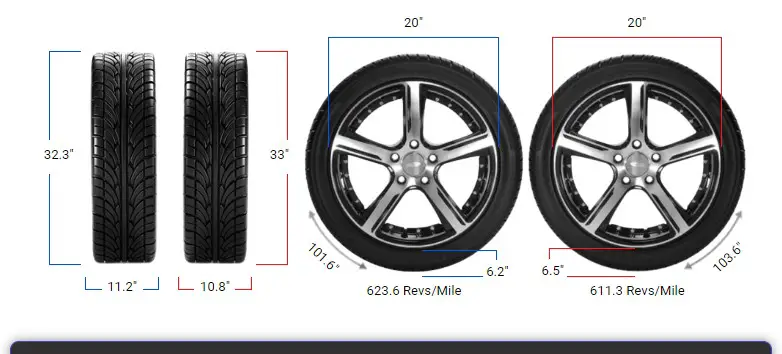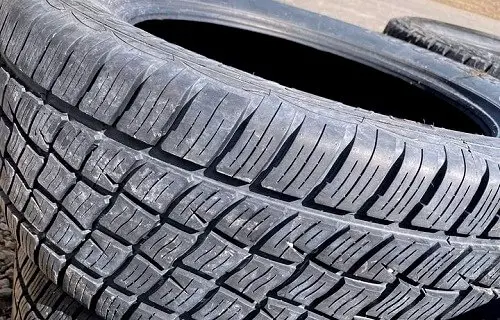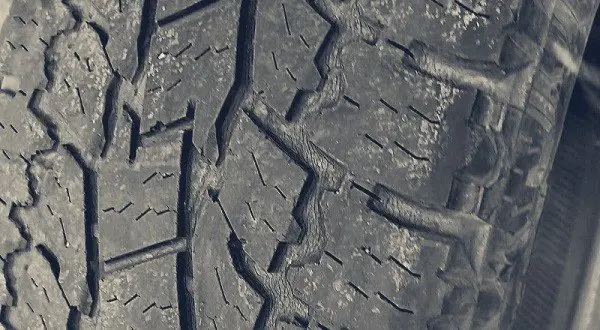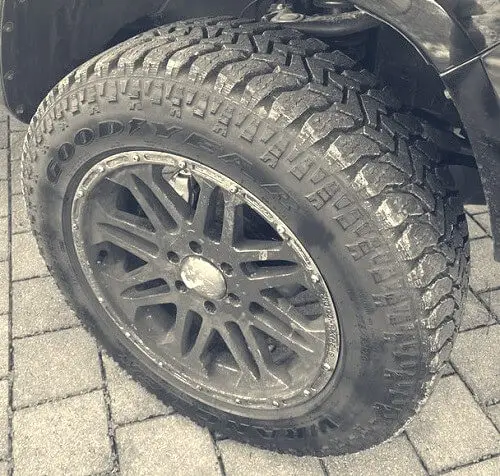Tire Size 285/55r20 vs 275/60r20

Tire size changes can significantly impact your vehicle’s performance and safety. Let’s explore the effects of switching from 285/55r20 to 275/60r20 tires, examining both benefits and potential drawbacks.
- Slightly taller profile increases ground clearance by 0.325 inches
- Narrower width may improve performance in soft off-road conditions
- Taller sidewall potentially offers better ride comfort on rough roads
- Minor speedometer inaccuracy with actual speed about 2% faster than indicated
- Negligible impact on overall vehicle performance in most driving conditions
285/55r20 vs 275/60r20 Table
The 275/60r20 tire size is slightly taller (0.65 inches or 16.5 mm) and narrower (0.39 inches or 10 mm), resulting in a 2% increase in overall diameter and a 3.5% decrease in width.

Fitment Guide
In this case, the 275/60r20 tire’s diameter is 2% larger than the 285/55r20, falling within the acceptable range. This means the interchange is generally recommended without requiring significant modifications.
On-Road Impact
Switching to 275/60r20 tires can affect various aspects of your vehicle’s on-road performance. Let’s examine these impacts:
- Speedometer Accuracy: The 2% increase in diameter means your vehicle will travel slightly further with each tire rotation. This results in a minor speedometer discrepancy. For example, when your speedometer reads 20 mph, you’ll actually be traveling at 20.4 mph. While this difference is small, it’s worth noting for precise speed control.
- Ride Comfort: The taller sidewall (6.5 inches vs. 6.17 inches) of the 275/60r20 tire provides more cushioning, potentially improving ride comfort. This extra rubber can help absorb road imperfections, resulting in a smoother driving experience.
- Handling: The narrower width of the 275/60r20 tire (10.83 inches vs. 11.22 inches) might slightly reduce cornering grip on dry roads. However, this difference is minimal and may not be noticeable in everyday driving conditions.
- Gas Mileage: The slight increase in overall tire diameter could marginally improve fuel efficiency due to lower engine RPMs at cruising speeds. However, this improvement is likely to be negligible in real-world conditions.
- Aesthetics: The taller and narrower profile of the 275/60r20 tire may give your vehicle a slightly different look. Some drivers prefer this appearance, as it can make the wheel wells appear more filled out.

Off-Road Impact
For those who venture off the beaten path, the switch to 275/60r20 tires can have some effects on off-road performance:
- Ground Clearance: The 0.65-inch increase in diameter translates to a theoretical 0.325-inch (8.25 mm) gain in ground clearance. While this improvement is small, it could make a difference in extreme off-road situations.
- Traction: The narrower width of the 275/60r20 tire might provide better performance in soft surfaces like mud or sand, as it can “cut” through these terrains more easily. However, the difference is minimal and may not be noticeable in most off-road scenarios.
- Flotation: The slightly larger overall diameter increases the tire’s contact patch length, which can improve flotation on soft surfaces. This could provide a marginal advantage in challenging off-road conditions.
- Rock Crawling: The taller sidewall of the 275/60r20 tire offers more flexibility, which can be beneficial when rock crawling. It allows for better conformity to uneven surfaces and can help maintain traction in technical terrain.
Durability & Wear
The change in tire size can have some implications for durability and wear:
- Tread Life: With fewer revolutions per mile (611.3 vs. 623.58), the 275/60r20 tire may experience slightly less wear over time. This could potentially lead to marginally improved tread life, although other factors like driving style and road conditions play a more significant role.
- Load Capacity: It’s essential to ensure that the new tire size maintains or exceeds the load capacity of the original size. Always check the tire specifications and your vehicle’s requirements to ensure safety.

What is the Difference Between 285/55r20 and 275/60r20?
The main difference between 285/55r20 and 275/60r20 tires is in their overall dimensions. The 275/60r20 tire is slightly taller and narrower compared to the 285/55r20.
This change in dimensions affects the tire’s overall diameter, width, and sidewall height, which can impact various aspects of vehicle performance, including ground clearance, handling, and ride comfort.
Can I Use 275/60r20 Instead of 285/55r20?
Yes, you can use 275/60r20 instead of 285/55r20. The difference in overall diameter between these two tire sizes is 0.65 inches or 2%, which falls within the recommended 3% tolerance for tire size changes.
This means the switch should not significantly affect your vehicle’s performance or safety.
How Much Taller Is a 275/60r20 Tire Than a 285/55r20?
A 275/60r20 tire is 0.65 inches (16.5 mm) taller than a 285/55r20 tire. The 285/55r20 has a diameter of 32.34 inches (821.5 mm), while the 275/60r20 has a diameter of 32.99 inches (838 mm). This represents a 2% increase in overall diameter.

How Much Wider is a 285/55r20 Tire Than a 275/60r20?
A 285/55r20 tire is 0.39 inches (10 mm) wider than a 275/60r20 tire. The 285/55r20 has a width of 11.22 inches (285 mm), while the 275/60r20 has a width of 10.83 inches (275 mm).
This represents a 3.5% decrease in width when switching from 285/55r20 to 275/60r20.
Our Observation
Switching from 285/55r20 to 275/60r20 tires offers a mix of subtle benefits and potential drawbacks. The slightly taller and narrower profile can enhance ride comfort and provide a marginal increase in ground clearance, which may appeal to both on-road and off-road enthusiasts.
However, the differences in performance are generally minimal and may not be noticeable in everyday driving conditions. The change falls within the acceptable range for fitment, making it a viable option for those seeking a different tire size.
Ultimately, the decision to switch should be based on individual preferences and specific vehicle requirements, as the overall impact on both on-road and off-road performance is relatively negligible.

Meet Caitlin McCormack, a Tire Size Expert and Blogger Passionate About Everything Related to Tires. With Years of Experience in the Tire Industry, Caitlin Has Become an Expert in Tire Sizes and Their Impact on Vehicle Performance.
